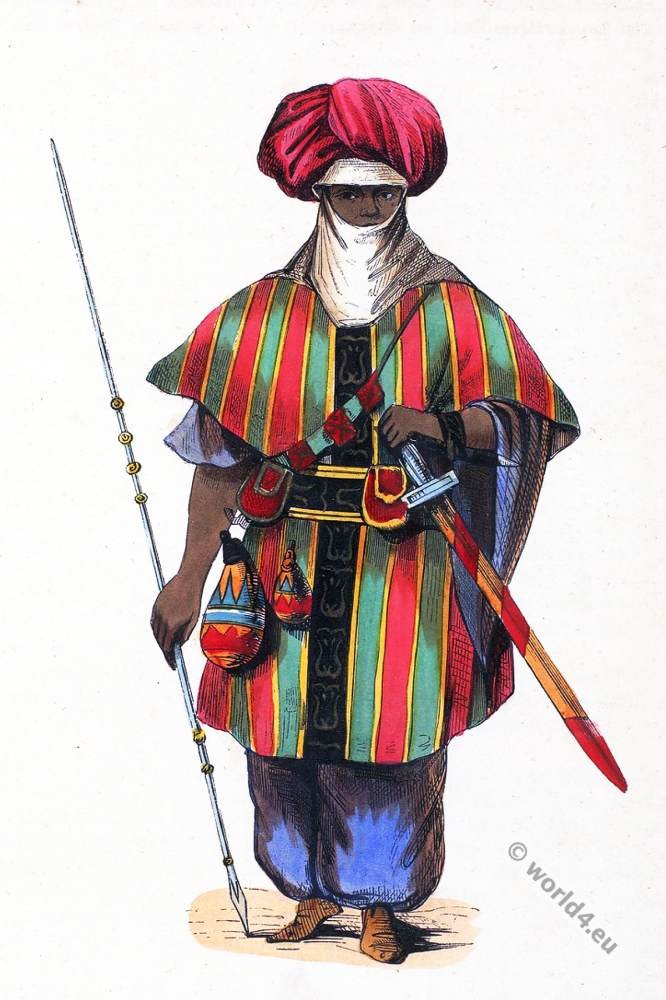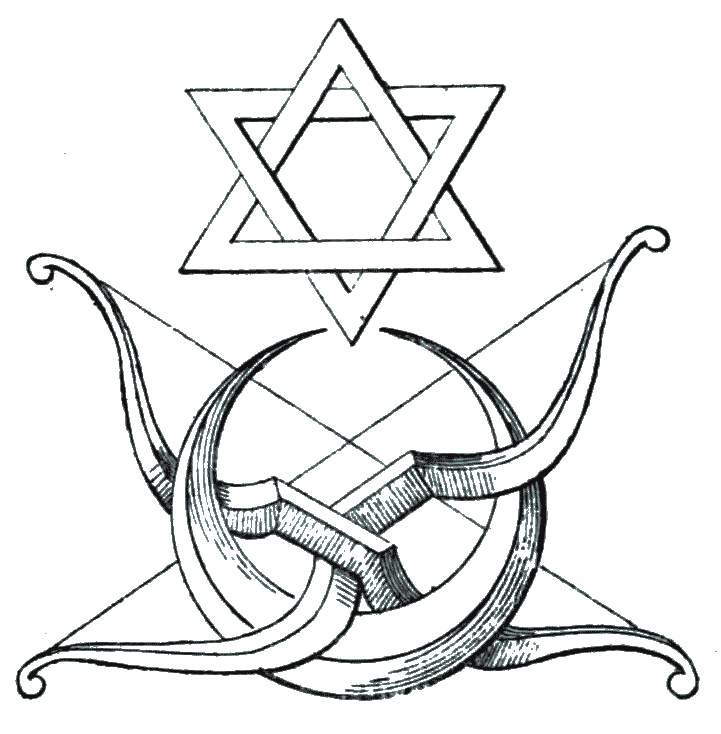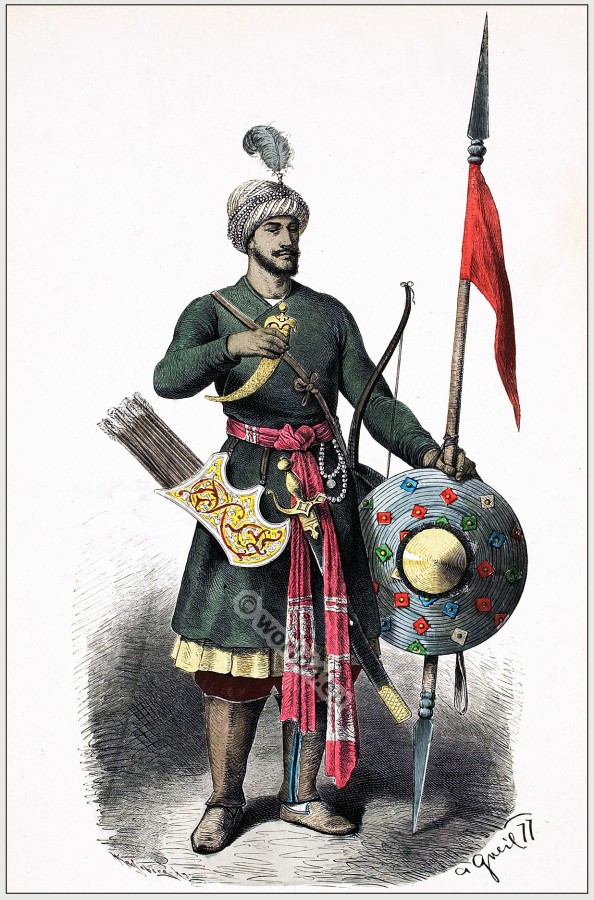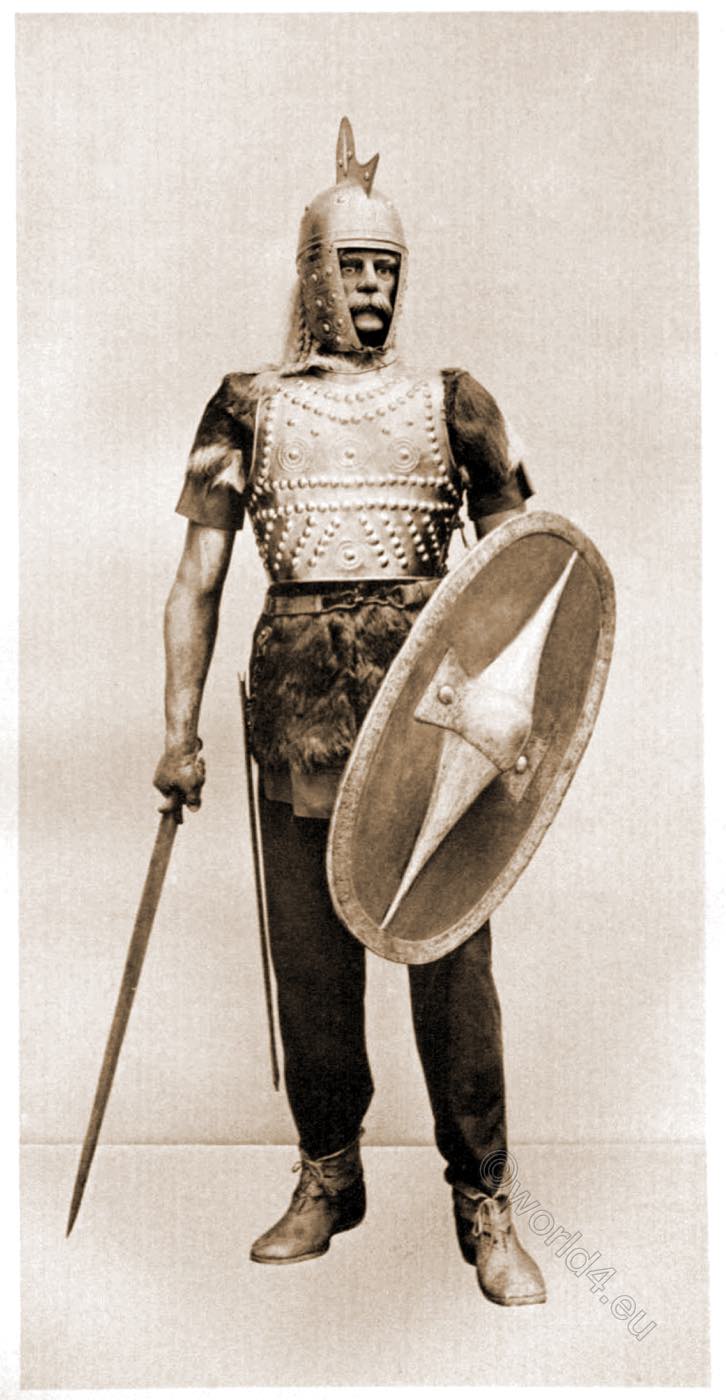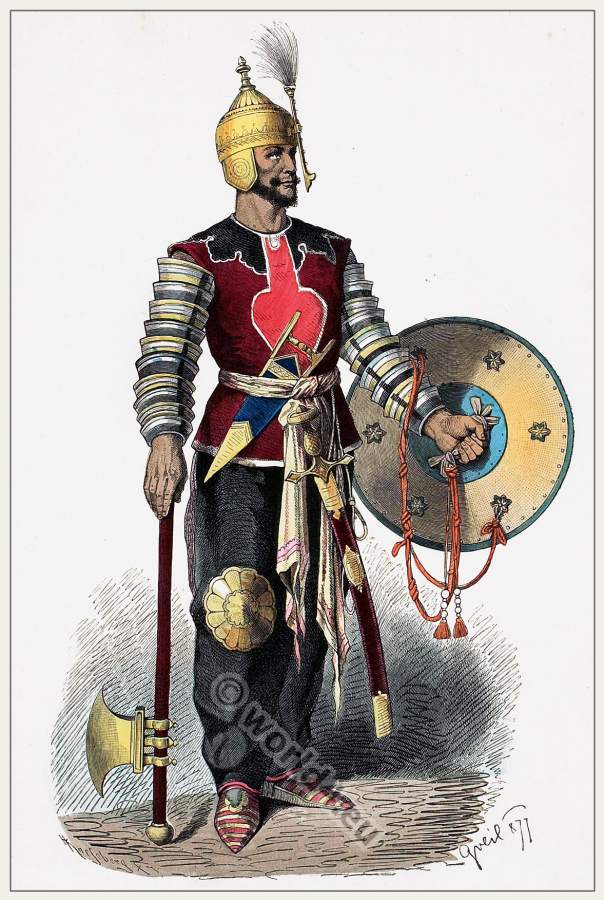Tuareg Warrior. Tamasheq. Arabia, Africa.
Guerrier de Tuarick.
The Tuareg (singular: Targi (male), Targia (female); are a people in Africa belonging to the Berbers, whose settlement area extends over the Sahara desert and the Sahel.
The word Tuareg is derived from the word Targa, the Berber name for the province of Fezzan in Libya. Tuareg originally referred to the inhabitants of Fezzan. Targa is a Berber word that can be translated as ‘gutter’ or ‘channel’, and more broadly as ‘garden’. According to local opinion, Targa does not refer to the entire Fezzan, but only to the region between the cities of Sebha and Ubari, and is referred to in Arabic as bilad al-khayr ‘good land’. This refers to the fertile Wadi al-Haya (formerly Wadi al-Ajal), which supplies the entire south of Libya with agricultural products.
The name Tuareg has become naturalized in the German, Francophone and Anglo-American language areas since colonial times. The Tuareg themselves do not refer to themselves by this name. The emic name of the Tuareg is Imajeghen in Niger, Imuhagh in Algeria and Libya, and Imushagh in Mali.
In literature, the Tuareg are referred to as Kel Tagelmust ‘the people of the face veil’ or “The Blue People” because they wear clothes dyed with indigo. Neither term is used by the Tuareg. A guest who has finished three glasses of tea is under the protection of the Tuareg.
Source: Manners, customs and costumes of all peoples of the world, based on authentic documents and the most recent trips by Auguste Wahlen, Knight of several Orders. Engrapher: François Pannemaker (1822-1900). Theophile Emanuel Duverger (1821-1894). Published: Brussels, 1843.
Discover more from World4 Costume Culture History
Subscribe to get the latest posts sent to your email.

